Last updated on September 5th, 2024
Featured image: Les Anses-d’Arlet in Martinique, a safe and welcoming destination for solo women travellers | Photo by Martinique Tourism, copyright © Comité Martiniquais du Tourisme, www.martiniquetourisme.com
Tropical landscapes meet adventure on the ‘Land of Flowers’
by Jennifer Reynolds
In April, I escaped the frosty mornings of downtown Toronto for a taste of tropical warmth and humidity in Martinique. When I mentioned my trip to friends, most had heard of the island but couldn’t quite place it on a map. That’s part of Martinique’s charm — it’s a destination that flies under the radar, quietly waiting to be discovered by those seeking something more than the typical Caribbean getaway.
From the moment I set foot on this island, I was captivated by its lush landscapes, vibrant botanical gardens, and deep commitment to sustainability. As an avid gardener who cherishes nature, fresh food, and learning from the locals, I found myself in paradise. But what truly surprised me was the friendliness and kindness of the people. In this French island with a population of 350,000, every interaction felt genuine and heartfelt. Their warmth and generosity turned my trip into a deeply enriching experience, one that leaves me longing to return to this hidden gem in the Caribbean.
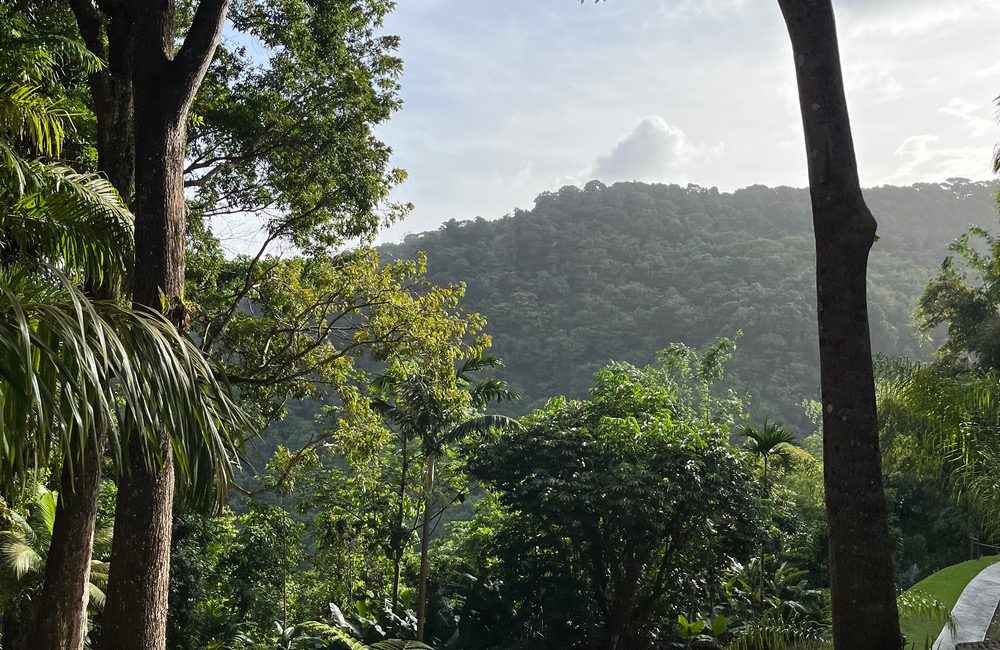
View of the mountains from Jardin de Balata/ Photo by Jennifer Reynolds
Less-travelled Martinique is a blend of Creole culture and French sophistication
Nestled in the Lesser Antilles, Martinique is a French overseas region that combines European sophistication with Caribbean vibrancy. It’s a place where history runs deep, from the legacy of colonial sugar plantations to the enduring influence of Creole culture. The island’s unique position as a bridge between cultures is reflected in its language, cuisine, and way of life — a rich tapestry woven from centuries of global interaction. This history shapes every aspect of Martinique, from its architecture to its agricultural practices, offering women a chance to step back in time while enjoying the comforts of the present.
This isn’t your typical resort destination with towering hotels and crowded beaches. Instead, the island offers something far more special — a chance to immerse yourself in the authentic rhythms of local life. With only one all-inclusive resort, you won’t find the usual tourist trappings here. Instead, you’ll discover clean, serene beaches where locals outnumber visitors, giving you the sense that you’ve been welcomed into a close-knit community rather than just another vacation spot.
Approximately 80 per cent of Martinique’s 500,000 visitors a year hail from Europe, with the remainder coming from the Americas. With a calendar brimming with festivals and cultural events — February’s Carnaval, July’s Festival Culturel de Fort-de-France, and November’s Raid de Alizées, a women-only adventure race through the island’s stunning landscapes — there’s always a reason to visit.
I felt extremely safe both on my own and when I was with a group in Martinique. Women are treated with the utmost respect, and the locals’ renowned politeness and hospitality create a genuinely welcoming atmosphere. Whether in shops, taxis, on the beach, or on the streets, everyone I met was friendly and happy to offer directions and a warm welcome to their island. The excellent infrastructure and impeccable cleanliness throughout Martinique reflect the pride locals take in their home. Modern transportation (cars, busses and ferries), healthcare facilities, and various accommodation options further enhance the ease of travel and offer peace of mind.
Visiting Martinique feels like being invited into the home of its people. Whether you’re wandering through small villages, dining at family-owned restaurants, or exploring the island’s natural wonders, there’s an undeniable warmth and hospitality that makes you feel like a guest, not just a tourist. This is a place where you can truly connect with the culture, savour the unspoiled beauty, and experience the island as the locals do.
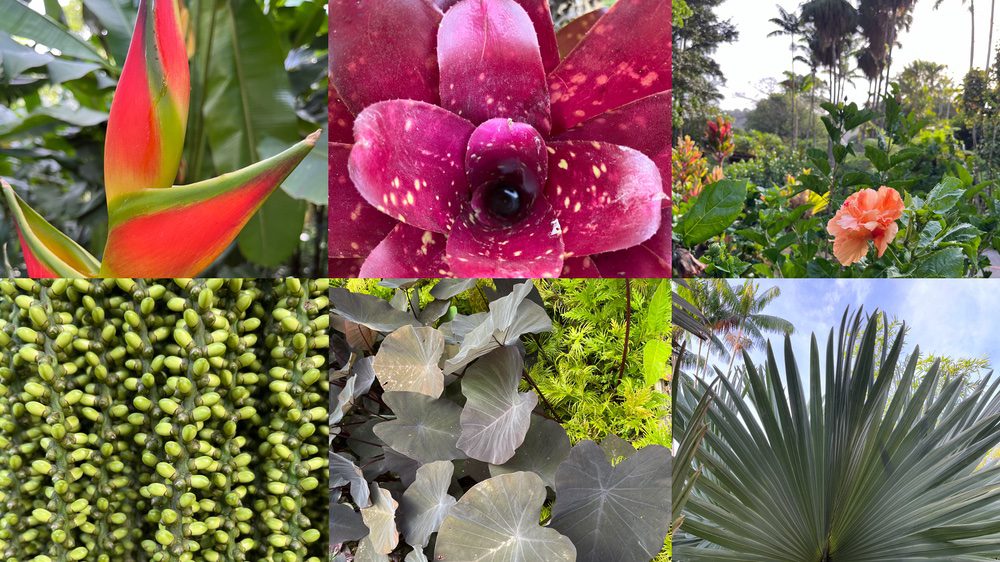
Facts about Martinique
Size of Martinique: Martinique has a land area of 1,128 km2.
Where is it? It’s in the Lesser Antilles Island chain in the eastern Caribbean Sea between Dominica and St. Lucia.
Capital: Fort-de-France
Is a tourist visa required? Not for citizens of Canada, the US or most European countries.
Local currency: Euros.
Languages: French and Creole. Some people speak a little bit of English, but you should not rely on this.
Average temperature December to May (dry season): 28°C
Average temperature June to November (rainy season): 25°C
Transportation: Visitors can easily rent a car, take local buses and local ferries and hire taxis.
Internet and Wifi: Most areas have good coverage.
Don’t forget: A European plug adapter.
The Caribbean island is an overseas department of France and boasts a rich and complex history shaped by Indigenous cultures, colonial encounters, and the impact of slavery. The history of Martinique is a testament to resilience and cultural fusion. From its Indigenous roots and colonial exploitation to the abolition of slavery and modern-day efforts to preserve its rich heritage, the people of Martinique strive to honour their ancestors and ensure their stories are remembered and respected. Through museums, memorials, cultural celebrations, and ongoing education, the legacy of those who came before is kept alive, enriching the island’s present and future.

When to Travel to Martinique
Unlike Canada’s four seasons, Martinique experiences just two — dry and rainy. The dry season, from December to May, offers sunny skies, gentle sea breezes, and temperatures between 21°C and 30°C. February and March are particularly pleasant, with minimal rainfall. In contrast, the rainy season, spanning June to November, brings higher humidity, frequent rain, and the potential for storms, especially in September.
However, climate change has made these seasonal patterns less predictable. While Martinique enjoys consistently warm weather due to its Caribbean location, its diverse terrain can cause localized weather variations. In fact, when I was there in April, a few days were overcast and hazy, not from the clouds but from the sand from the Sahara Desert. This is known as Saharan dust and occurs when strong winds carry dust all the way from North Africa across the Atlantic Ocean.
The island’s northern part, with its lush rainforests and volcanic landscape, tends to be more humid with higher rain chances. The flatter southern region enjoys more sun and hotter temperatures. Locals are always prepared for sudden rain showers, even during the dry season.
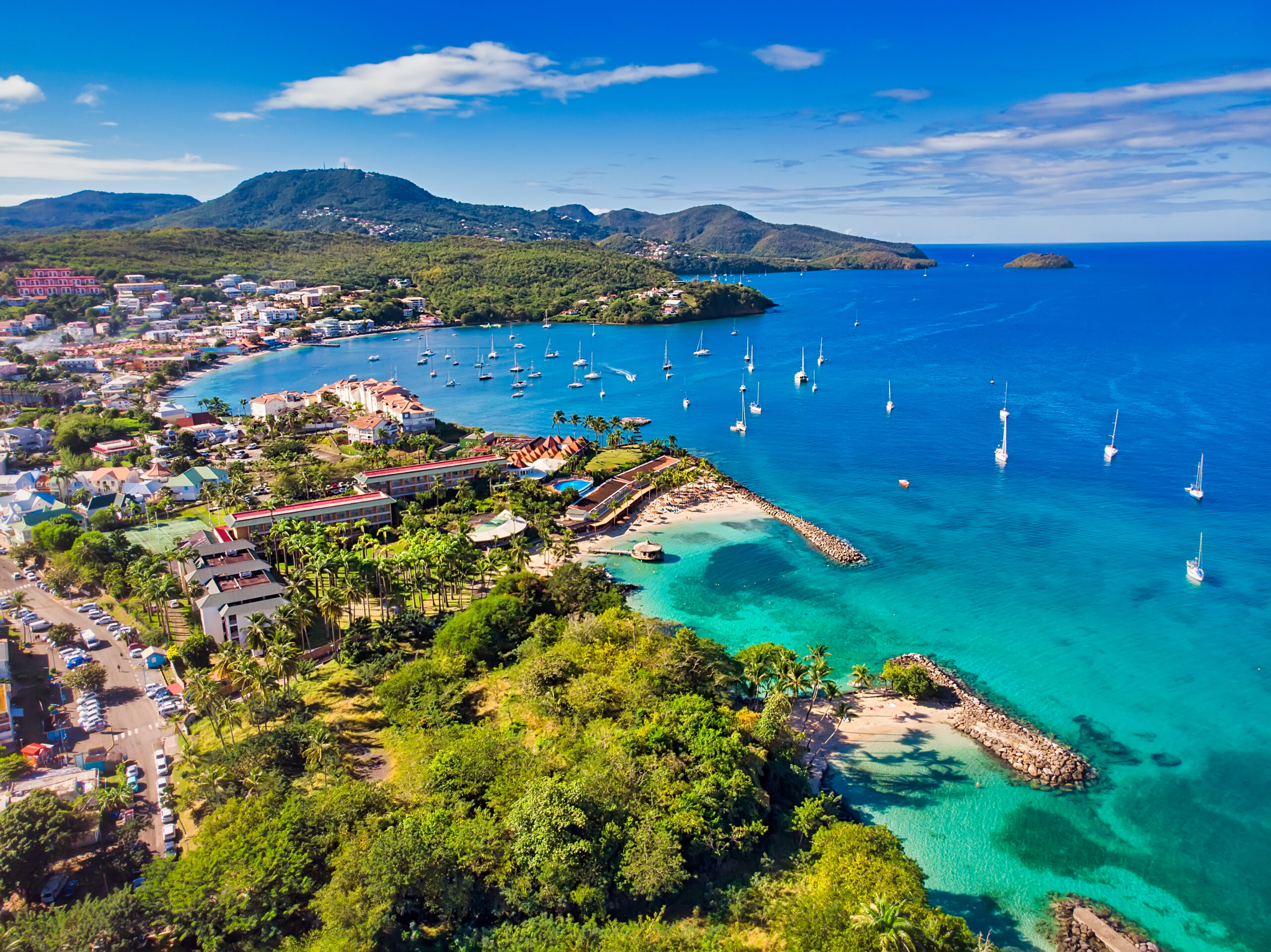
Panorama of Anse-Mita in Martiniqu / Photo Credit Martinique Tourism
A place for every kind of traveller
When it comes to accommodations in Martinique, the island offers a wide array of options that cater to different tastes and budgets. Whether you’re drawn to charming boutique hotels nestled in lush tropical gardens or luxurious beachfront resorts with stunning ocean views, there’s something for every type of traveller.
Many visitors seek a more intimate experience, with about half opting to stay in family-run guesthouses, private home rentals, or Airbnb properties. These options not only provide a cozy, home-like atmosphere but also allow you to immerse yourself in the local culture. Given Martinique’s diverse geography, where you choose to stay can significantly impact your travel experience, so it’s wise to consult the Martinique Tourism Board’s website for a comprehensive overview of the island’s different areas.

Hotel La Pagerie is a beautiful boutique hotel only 30 mins from the airport (Left + Centre). Diamant Les Bains is a 4-star retreat set on Martinique’s longest beach with a stunning view of the famous Diamond Rock (Right) / Photo by Jennifer Reynolds
For those seeking personalized service and unique accommodations, VillaVEO is an excellent option. This service manages over 150 breathtaking properties across the island, ranging from intimate villas for two to expansive homes that can host groups of 30 or more. VillaVEO also offers custom services, such as private chefs, massages, and more — a perfect blend of luxury and authenticity.
Club Med Buccaneer’s Creek is the island’s sole all-inclusive offering. This stunning resort delivers everything you’d expect from the world-class luxury brand — pristine beaches, gourmet dining, and various activities. However, it’s worth noting that this more curated experience may not feel as authentic as the island’s smaller hotels and vacation homes.
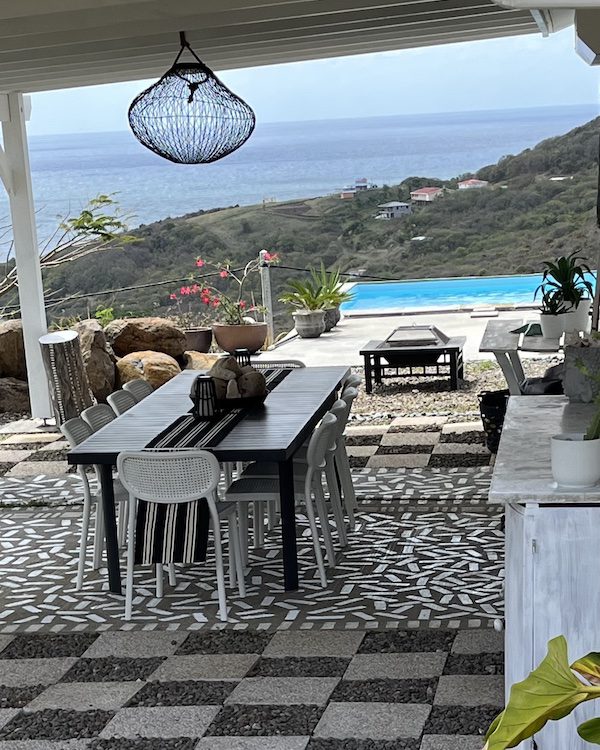
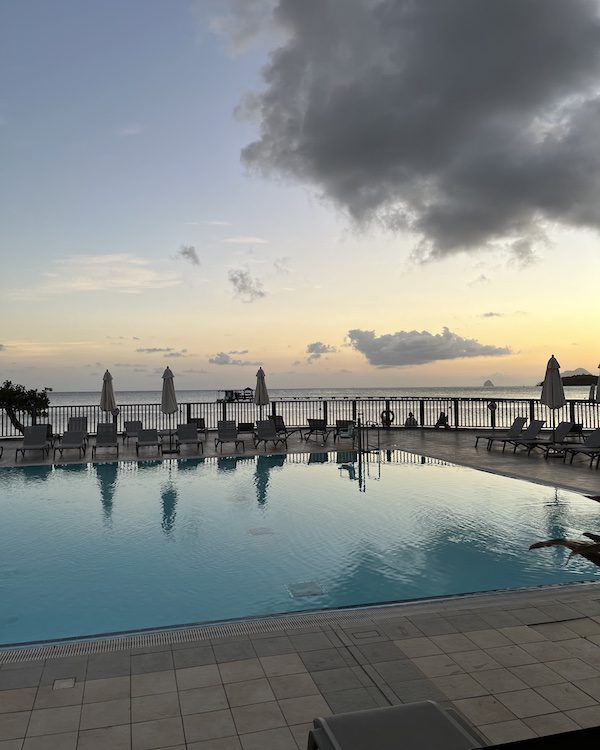
The pristine beachfront at Club Med Les Boucaniers Resort offers lots of activities and beautiful places to relax / Photo by Jennifer Reynolds
How to Get to Martinique
You can fly directly to the capital from Montreal and Toronto on Air Canada and Air Transat.
The new seasonal flight from Toronto to Fort-de-France runs from December 14, 2024, to April 19, 2025, departing every Saturday.
Air Canada is launching a new route from Montreal to Fort-de-France, offering up to six weekly flights during the high season in December 2024.
Air Transat offers up to four weekly flights from Montreal, with a connection through Toronto, from October 27, 2024, to June 14, 2025.
Disclaimer: Jennifer Reynolds was a guest of Martinique Tourism on a five-day trip to the island in April 2024. The Tourism Board did not review this article prior to publication.
More to Discover From The Caribbean
More Than Breathtaking Beaches: Adventures For Women in Martinique
Come for Martinique’s beaches but stay for eco-friendly adventures like hiking in lush rainforests, birdwatching and kayaking.
JourneyWoman Webinar: Less-Travelled Caribbean & Mexico on September 24
Join our September 24 webinar to learn about the Caribbean and Mexico from experts in our JourneyWoman Women’s Travel Directory.
How to Have a Five-Star Beach Vacation in Antigua on a Two-Star Budget
Featured image: Diana shares her tips on how to travel on a budget in Antigua | Photo by SeanPavone on EnvatoCaribbean Bliss in Antigua for Under $3000 a week by Diana Eden My friend Ruth and I have promised each other that, no matter what other travels we plan for...

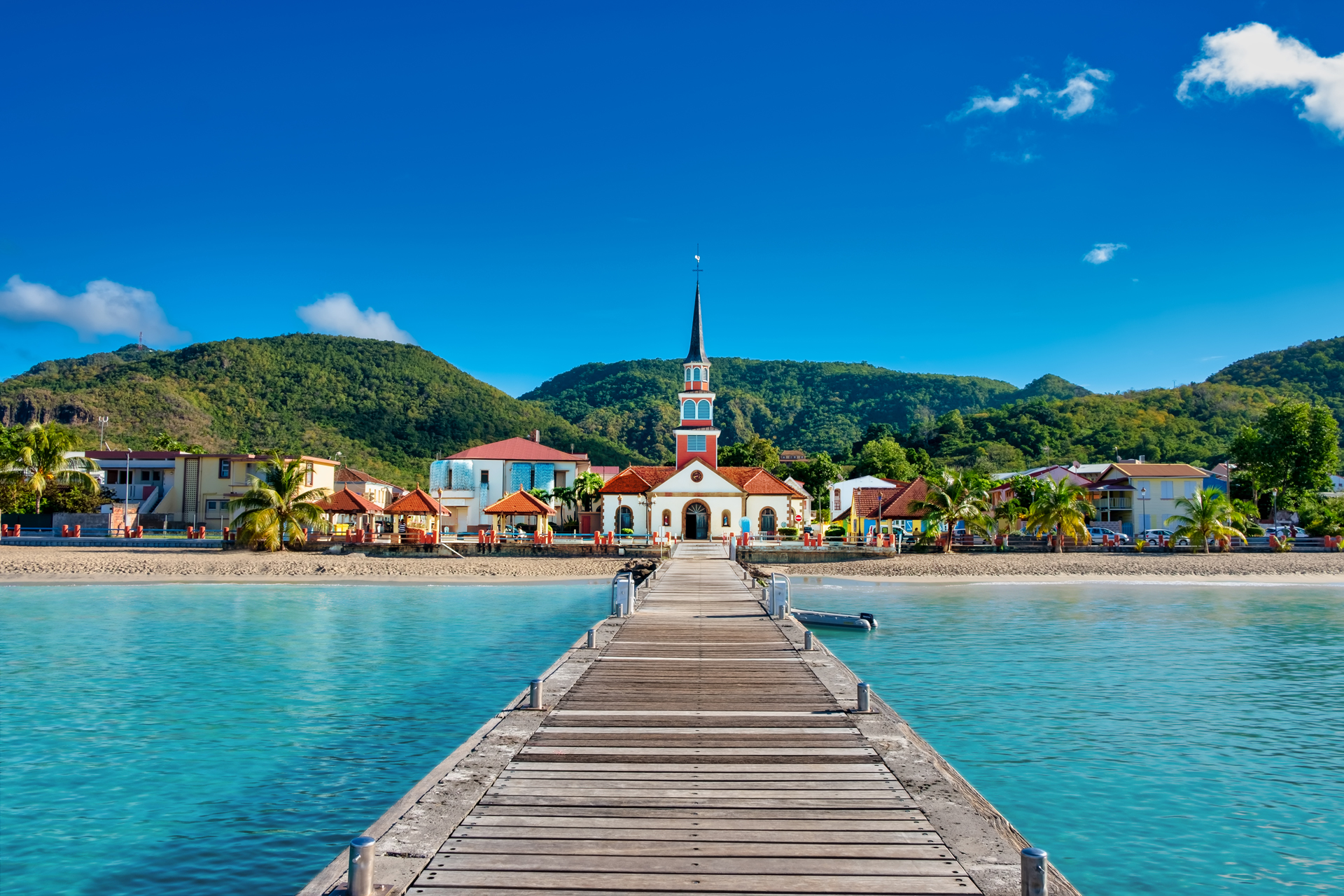


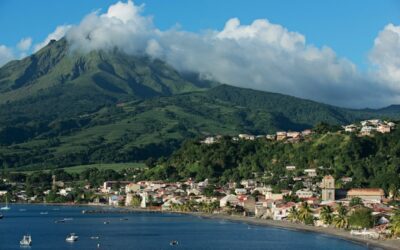
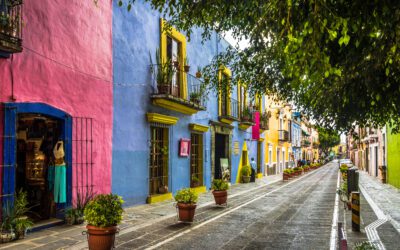

What a beautiful review of this island. You offered evocative descriptions to convince me I want to go (um, now!) and plenty of solid information to help me plan a trip I feel confident I would not be stressed about. Thank you!